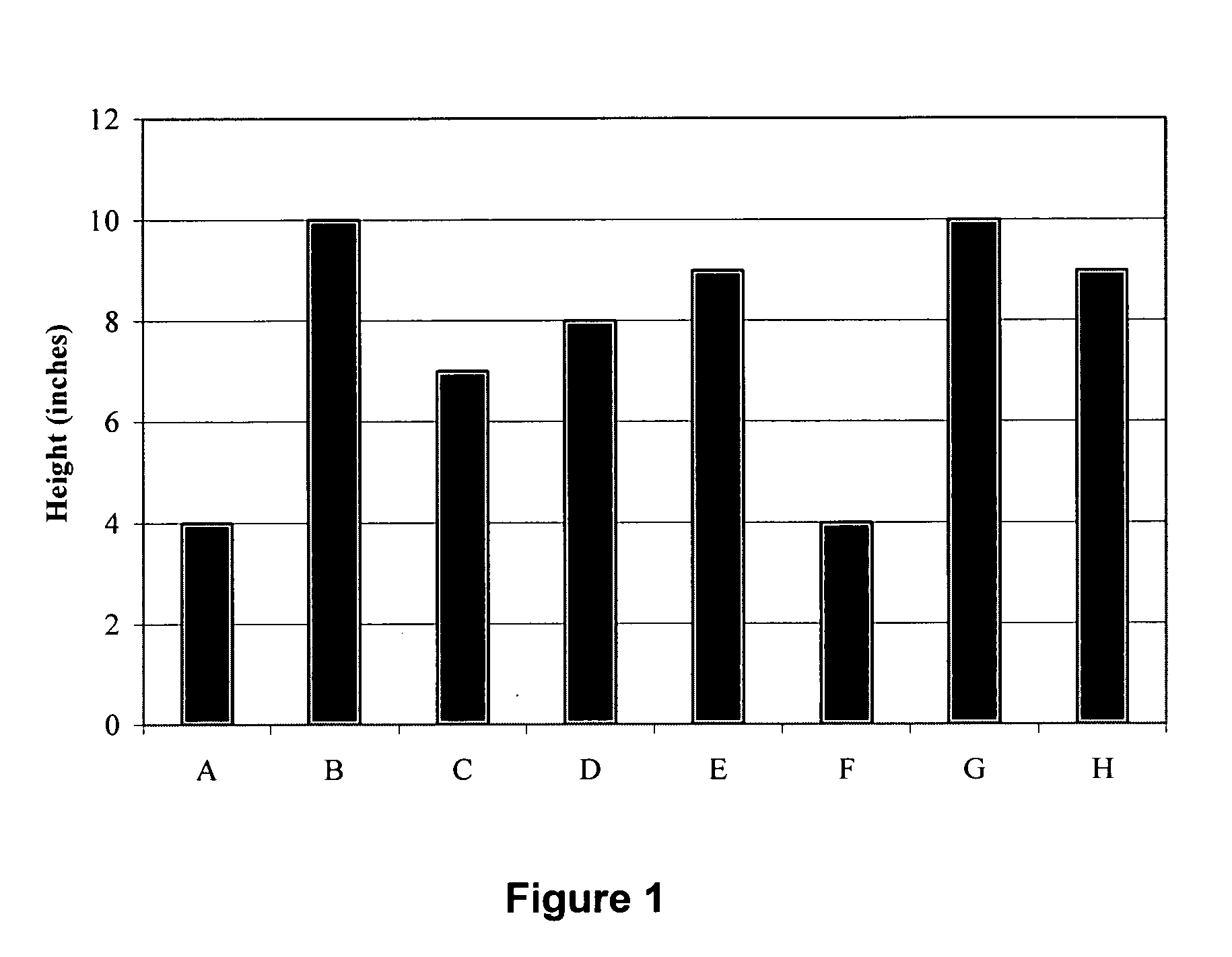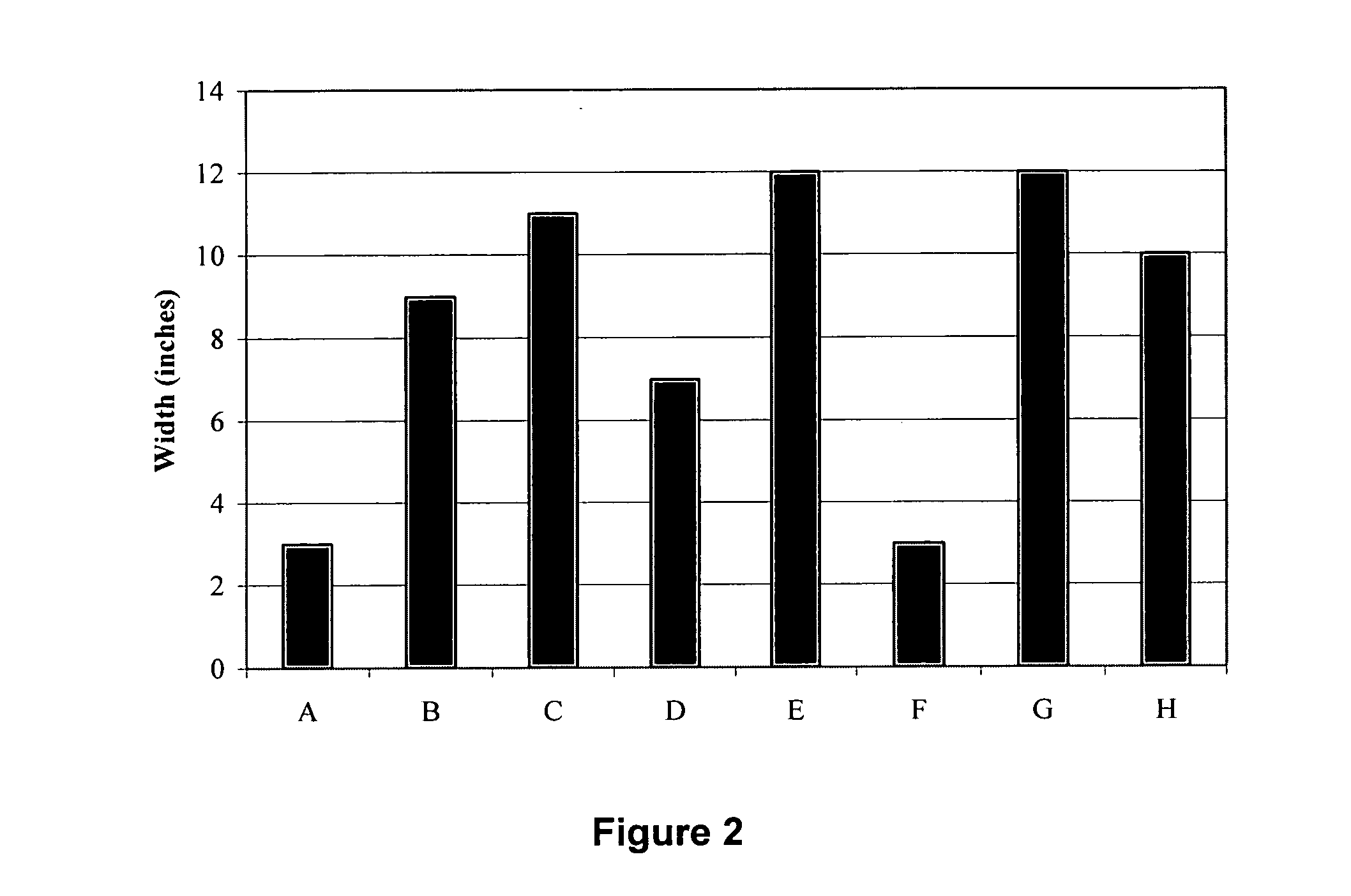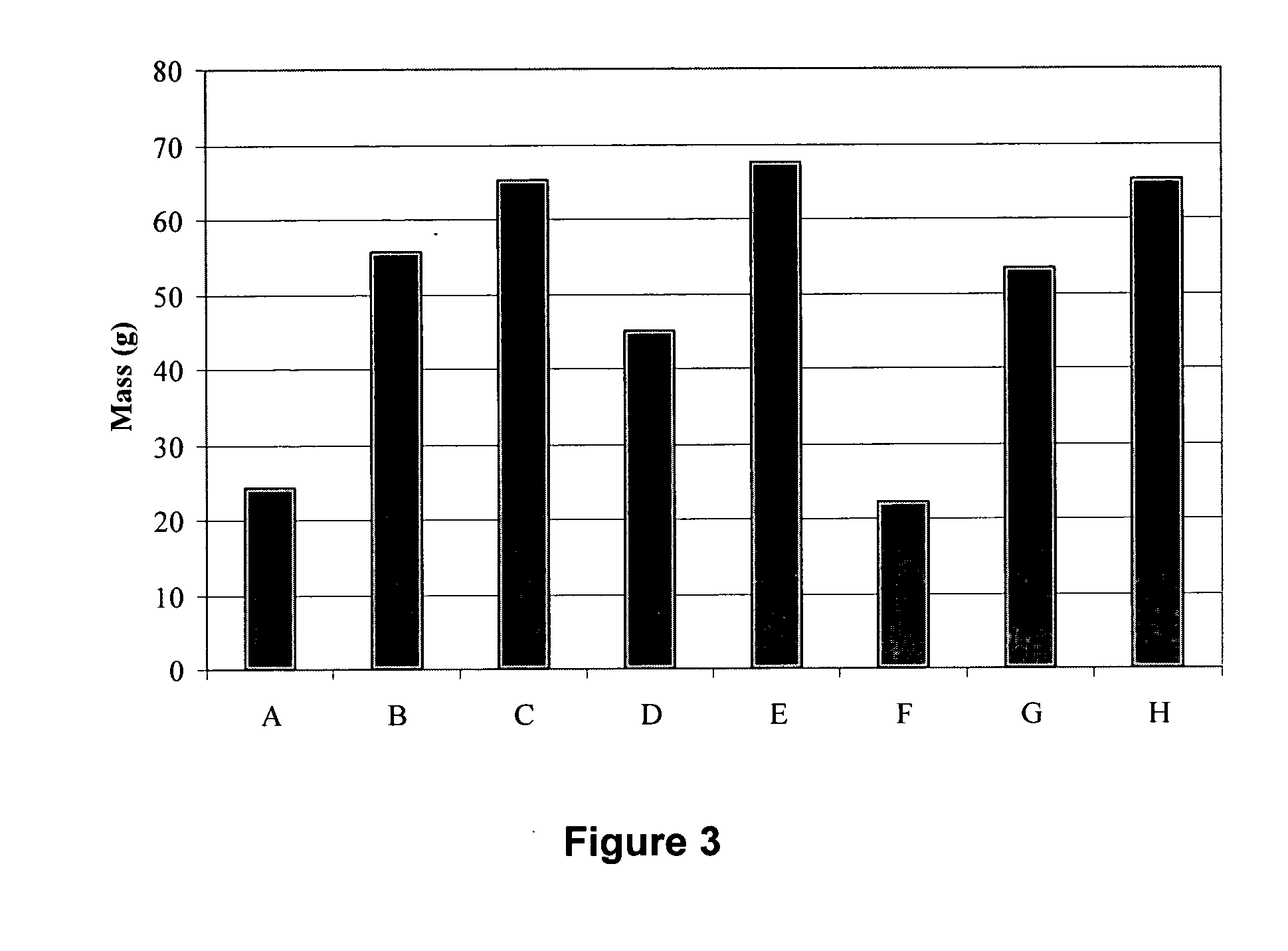Superabsorbent polymers in agricultural applications
a technology of agricultural applications and polymers, applied in the field of superabsorbent polymer products, can solve the problems of high cost of machinery, high cost of removal, and high cost of disposal, and achieve the effect of increasing crop production
- Summary
- Abstract
- Description
- Claims
- Application Information
AI Technical Summary
Benefits of technology
Problems solved by technology
Method used
Image
Examples
example 1
[0047] Deionized water (2,000 ml) was added to cornstarch (200 g; Cargill Gel Instant 12030, manufactured by Cargill Food and Pharma Specialties, Inc. of Cedar Rapids, Iowa) in a 3-liter resin kettle. The combination was mixed until a uniform mixture was formed. Acrylic acid (200 g; 99% purity; City Chemical, LLC of West Haven, Conn.) was added to the cooled mixture and the resulting mixture was stirred for approximately five minutes. Next, acrylamide (100 g; 99% purity; City Chemical, LLC of West Haven, Conn.) was added to the mixture, and the resulting mixture was stirred for approximately five minutes. Then methylene bis-acrylamide (0.5 g dissolved in 50 ml of deionized water; Molecular Grade; 99% purity; manufactured by Promega Corporation of Madison, Wis.) was added to the mixture, and the resulting mixture was stirred for approximately five minutes. Lastly, ammonium persulfate (0.5 g dissolved in 50 ml of deionized water; Molecular Grade; 99% purity; manufactured by Cascade Co...
example 2
[0050] Deionized water (2,000 ml) was added to cornstarch (200 g; Corn Products #3005, Industrial Starch (pearl starch), manufactured by CPC International, Inc. of Westchester, Ill.) in a 3-liter resin kettle. The combination was mixed until a uniform mixture was formed. The mixture was then heated to between about 185° F. and about 190° F. using a heating jacket. The mixture was maintained at this temperature for approximately 30 minutes, at which time the heating jacket was turned off and the mixture was allowed to cool to 150° F.
[0051] Acrylic acid (200 g; 99% purity; City Chemical, LLC of West Haven, Conn.) was added to the cooled mixture and the resulting mixture was stirred for approximately five minutes. Next, acrylamide (100 g; 99% purity; City Chemical, LLC of West Haven, Conn.) was added to the mixture, and the resulting mixture was stirred for approximately five minutes. Then methylene bis-acrylamide (0.5 g dissolved in 50 ml of deionized water; Molecular Grade; 99% puri...
example 3
[0054] Deionized water (2,000 ml) was added to pregelatinized yellow corn flour (200 g; #01965-00, manufactured by Cargill Dry Corn Ingredients, Inc. of Paris, Ill.) in a 3-liter resin kettle. The combination was mixed until a uniform mixture was formed. Acrylic acid (200 g; 99% purity; City Chemical, LLC of West Haven, Conn.) was added to the cooled mixture and the resulting mixture was stirred for approximately five minutes. Next, acrylamide (100 g; 99% purity; City Chemical, LLC of West Haven, Conn.) was added to the mixture, and the resulting mixture was stirred for approximately five minutes. Then methylene bis-acrylamide (0.5 g dissolved in 50 ml of deionized water; Molecular Grade; 99% purity; manufactured by Promega Corporation of Madison, Wis.) was added to the mixture, and the resulting mixture was stirred for approximately five minutes. Lastly, ammonium persulfate (0.5 g dissolved in 50 ml of deionized water; Molecular Grade; 99% purity; manufactured by Cascade Columbia D...
PUM
| Property | Measurement | Unit |
|---|---|---|
| diameter | aaaaa | aaaaa |
| density | aaaaa | aaaaa |
| temperature | aaaaa | aaaaa |
Abstract
Description
Claims
Application Information
 Login to View More
Login to View More - R&D
- Intellectual Property
- Life Sciences
- Materials
- Tech Scout
- Unparalleled Data Quality
- Higher Quality Content
- 60% Fewer Hallucinations
Browse by: Latest US Patents, China's latest patents, Technical Efficacy Thesaurus, Application Domain, Technology Topic, Popular Technical Reports.
© 2025 PatSnap. All rights reserved.Legal|Privacy policy|Modern Slavery Act Transparency Statement|Sitemap|About US| Contact US: help@patsnap.com



